The struggle for university degree and survival

Studying in another city is a significant sacrifice that many students undertake in order to get an education and to increase the possibility for highly paid job and by this way to ensure a better future. But, at what cost? What are they sacrificing to get to the final diploma?
Apparently, the students are not the most important category of citizens for the state. In this article we are going to discover the real struggle that the students in Albania and North Macedonia face during their university period. And between the lines of this article, we are going to compare the situation in the two countries.
Student dormitories – the ‘draft’ hotel
The initial challenge that every student arriving from another city faces is securing accommodation. Typically, the first option considered is university dormitories. Regrettably, the conditions within these dormitories are far from ideal, with a range of restrictions that severely impact the basic living conditions for the students. These include prohibitions on using heaters in the rooms, fridges, the temporary shutdown of elevators during certain hours, and various measures that seem to additionally burden the students.
For Albania it is present the existence of dormitories spread into 3 areas: RSU1 in Qytet Studenti; RSU2 in Street “Artan Lenja”; and RSU3 in street “Dibra’. RSU-1 has 29 schools under its jurisdiction, of which 5 are currently undergoing reconstruction, and 2 have been newly constructed after being demolished by the earthquake of 2019. In RSU-1 we have buildings from the communism era and the democratic era, where the architecture is almost the same in every building: so one room for 2-3 girls and for every floor a common bathroom and a common shower; for other buildings we have 2 rooms with one bathroom and in only 2 buildings we have a room for 2 students and the bathroom inside the room (where is included the shower, the sink and the toilette) inside the room.
In RSU1, the monthly rates range from 4,500ALL (40€) per person to 10,000ALL (90€) per person. In North Macedonia, the price is 3,000 MKD (50€) monthly/person. The situation in Macedonia is not better either. The toilets are miserable, hot water runs only twice a day, the elevator often get stuck. The most common meal are macaroni and rice.
The pictures show “Nikola Karev” student dormitory in Ohrid and they show very well the living conditions for the students.
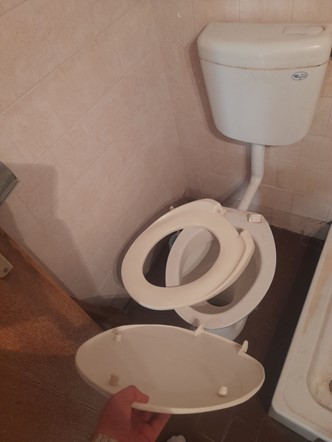
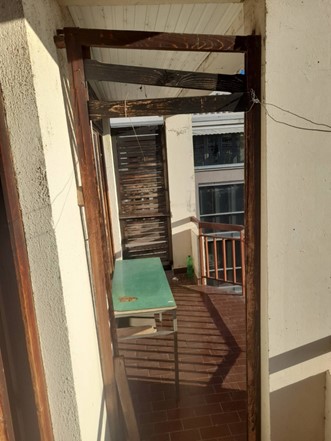
Photos from the student dormitory “Nikola Karev” in Ohrid


The student disk – croissant and juice
Both in North Macedonia and Albania, and average student consumes, on monthly average, around 100-200 euros per month for groceries and dining out. Buying groceries and cooking at home is generally more cost-effective than eating out at restaurants. Prices for groceries, such as fruits, vegetables, and basic food items, maybe are more affordable compared to many Western European countries. However, it is essential to note that prices can vary in different cities and regions within the country.
In Ohrid, as a tourist center, the prices are higher and there are no discounts for students. This was also confirmed in the survey we did with the students from the Faculty of Tourism and Hospitality in Ohrid.
Hristina Durchevska said that with her student card of 140 denars for a meal, she mostly buys baked goods with yogurt. She believes that there should be no restrictions and that the money from the card must be spent by 15:00 hours in the day.
The student Goran Dimevski told us that 140 MKD is not enough for one meal and that the student standard is very low. According to him, the prices in Ohrid are very high. “I think that they should reduce the prices for students, I understand that it is the season and that they need to earn money, but there is no need to pay so much for one juice, for example,” Dimevski said. For his colleague Andrej Petkovski, the student standard is too modest and he believes that the aid from the state should be greater.
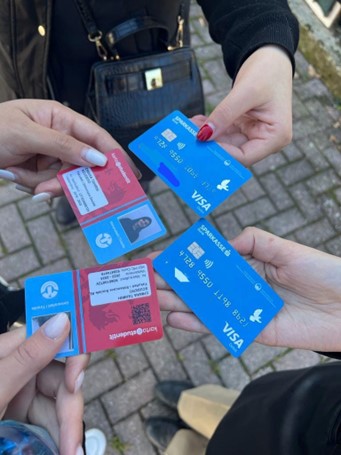
We also checked what you can buy with 140 denars. After our tour of one store, we only bought one croissant and juice with our daily meal money.
Albania has mensas, which were established during the communist era and initially exclusively catered to students. However, at present, they are open to a wider audience, including non-students. The cuisine offered at these locations is exclusively traditional Albanian food. Initially, the prices were relatively budget-friendly, but they have since escalated because of inflation several times. The students from Albania say that they must find job so they can afford the high monthly costs.
“The state is not helping and the mensa has become too expensive for our living standard, says of the students from Tirana.
Costs are increasing, the standard is declining
The students in both countries have a low standard and spend the most money on food and the least on books.
From the discussion with the students, and based on personal experience, student’s monthly expenses circle around 200-400 euros to cover expenses like accommodation, food, transportation, and studying materials.
The “student basket” includes costs such as participation, i.e., tuition, costs related to the faculty, costs for everyday life, further costs for transportation, housing, but also overhead costs. The student standard is quite low, and the financial situation of the students is difficult. Most of them live with their parents or guardians, who are also the most important source of finance. Students say that one of the best options for improving their standard is the possibility of paid student work, which is currently not systematically recognized by state institutions, nor is cooperation with the private sector stimulated. Also, as benefits that would make student life easier, students recognize free public transportation, as well as cards for subsidized food prices and tickets for cultural events.
The quality of studies often does not match the high costs
In North Macedonia, the prices range from a minimum of 100 euros per year to a maximum of 400 euros. This fee is divided into two equal installments, payable upon enrollment in either the winter or summer semester. Students are required to pay this fee every academic year when enrolling in the winter semester.
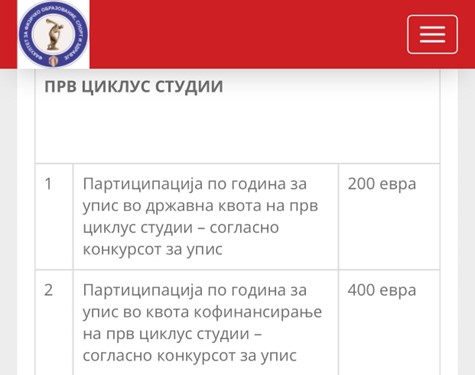
Most of the Government Universities offer tuition-free education, while some have fees as low as 500 Euro to 1, 500 Euro per semester. On the other hand, private universities charge tuition fees ranging from 7, 000 Euro to 10, 000 Euro per year.
Costs for studying in Albania range widely. This is because the government does not set tuition costs. Rather, the schools themselves do (Ligji për Arsimin e Lartë në Republikën e Shqipërisë). For this reason, students will find a wide range of pricing options available. In some cases, educational costs can range from the equivalent of €2000 up to €6000 per year. Despite the numerous expenses that students in Tirana already incur, an additional financial burden is imposed by unaccredited universities. We invest nearly 1, 200 euros in pursuit of a bachelor’s degree that may or may not receive official recognition abroad.
The University of Tirana, unfortunately, lacks sports facilities for student use, but it provides ample parking spaces for lecturers. Physical education classes are held at one of the two fields designated by the municipality, which is located at a considerable distance from the faculty, ranging from a 10-minute to a half-hour walk.
In some faculties in both countries, student clubs have regrettably become extinct. Occasionally, a new club may emerge, but its longevity is far from guaranteed.
Our recommendation leans toward the public university in Tirana, as it ensures your commitment and dedication will pay off. If you have a support system, financial means, and the determination to study diligently, you stand a strong chance of achieving a top grade, be it a tenth or a ninth (A grade). However, it is worth noting that the quality of education can differ based on the specific faculty you choose. In some faculties, you may encounter professors and lecturers who are truly inspirational, motivating you to pursue your studies and reach the peak of your career aspirations. Yet, as is the case in most educational institutions, you may also come across instructors who leave you pondering, “How did they end up here?” or “Why do they continue in this profession?” Frequently, the answer to such questions points to nepotism, but that’s a subject for a different discussion.
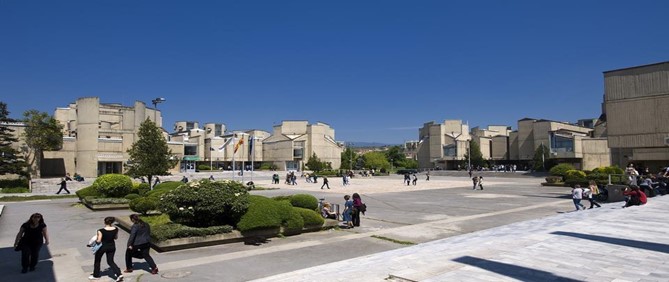

Conclusion
The state institutions that are in charge of taking care of the well-being of their citizens, do not take enough measures to improve the student standard. Because of this, the conclusion is imposed that students, young people and their problems are not a priority for state institutions, even though they are the future of the nation.
Recommendations
- Affordable Education: Provide financial assistance, scholarships, and affordable student loans to make higher education accessible to a broader range of students.
- Mental Health Support: Establish mental health programs and counseling services to support students’ emotional well-being.
- Extracurricular Activities: Support extracurricular programs and activities that help students develop social and leadership skills.
- Higher Education Support: Provide support for students pursuing higher education, including grants, loans, and research opportunities.
- Collaboration: Collaborate with educational institutions, teachers, parents, and students to develop and implement policies that meet their needs.
- Data and Research: Continuously gather data and conduct research to identify areas for improvement and assess the effectiveness of educational policies.
- Job Placement Services: Offer job placement services and internships to facilitate the transition from education to the workforce.
Authors:
Teodora Nedikj
Eneda Salkurti
Mihaela Petkovska Chiara Tahirih Scudero
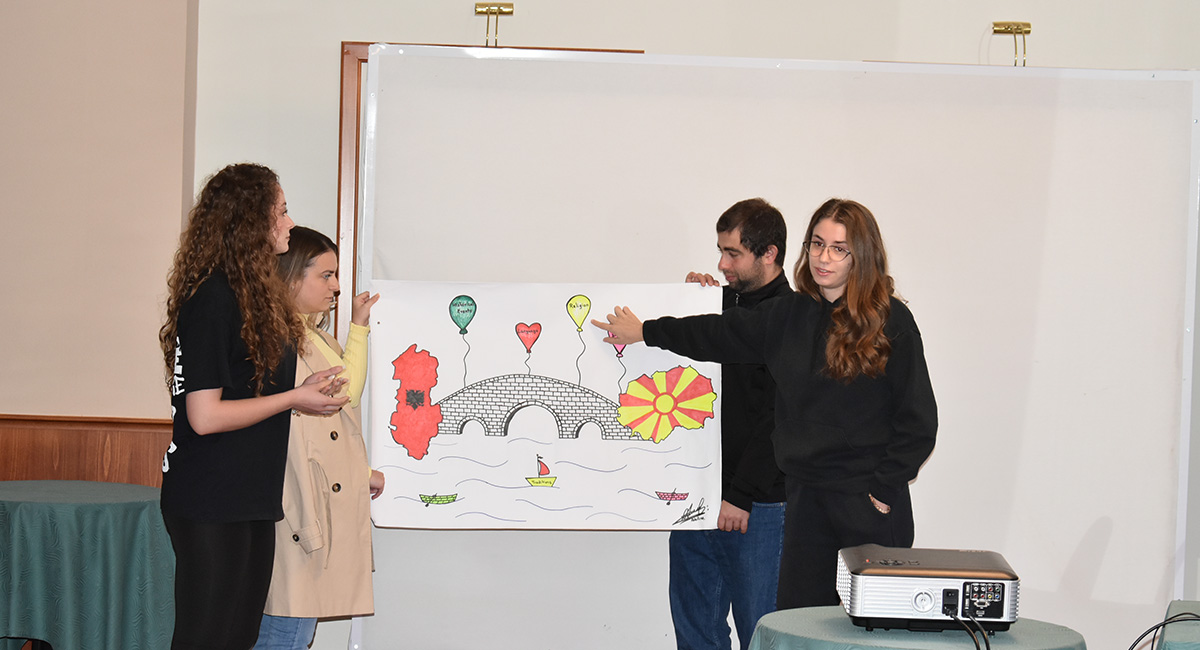
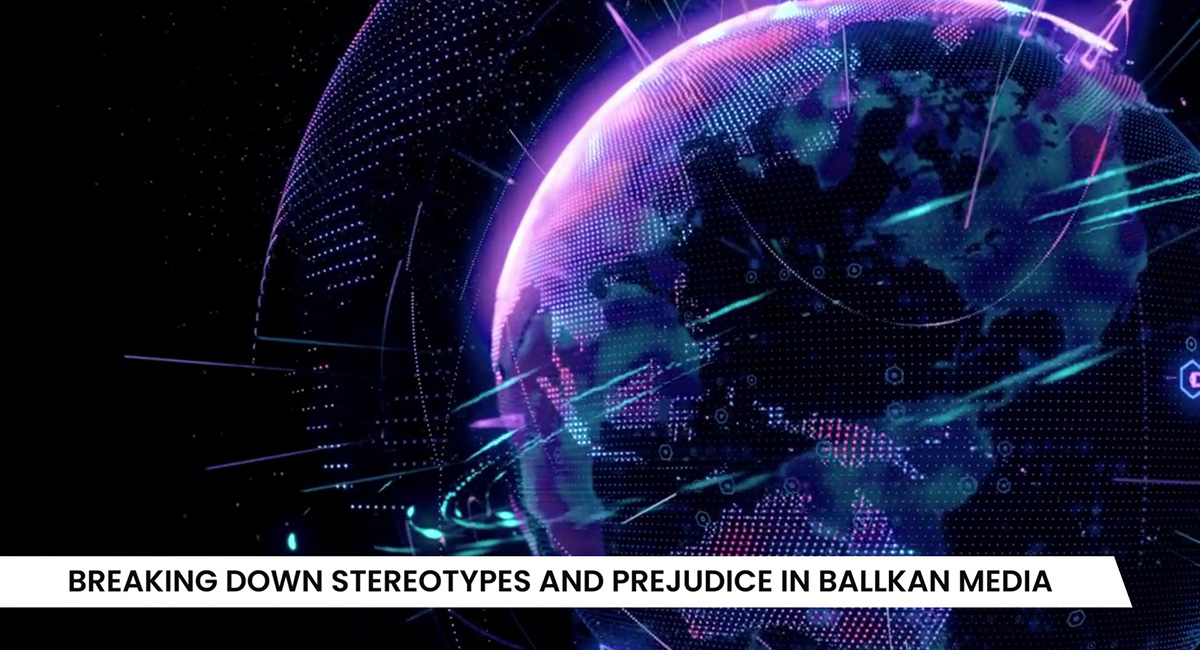



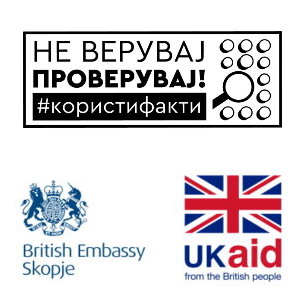 Оваа веб-страница е изработена во рамките на проектот „Употреба на новинарство засновано на факти за подигање на свеста и спротивставување на дезинформациите во медиумскиот простор во Северна Македонија (Користи факти)“, кој се реализира од Институтот за комуникациски студии. Проектот е финансиран од Владата на Обединетото Кралство, со поддршка на Британската амбасада во Скопје. Мислењата и ставовите наведени на оваа веб-страница не ги одразуваат секогаш мислењата и ставовите на Британската Влада.
Оваа веб-страница е изработена во рамките на проектот „Употреба на новинарство засновано на факти за подигање на свеста и спротивставување на дезинформациите во медиумскиот простор во Северна Македонија (Користи факти)“, кој се реализира од Институтот за комуникациски студии. Проектот е финансиран од Владата на Обединетото Кралство, со поддршка на Британската амбасада во Скопје. Мислењата и ставовите наведени на оваа веб-страница не ги одразуваат секогаш мислењата и ставовите на Британската Влада.